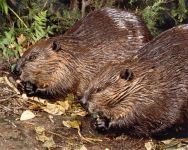


|

|
|
 
|

| Current electronic newsletter • Current print version newsletter • Archives |
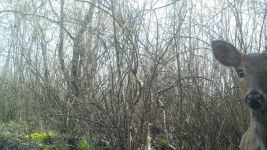
08 October 2025:
Patrol volunteers needed for 2025 hunting 'season':
We are requesting the help of volunteers to patrol the Refuge to keep wildlife safe during the annual hunting 'season'. Hunting season is currently underway, with Fall bow season having begun in September. We will be patrolling through at least the end of January 2026, with a particular focus on 'Six-day Firearm Season' (December 8-13, 2025).
Trail maps and orange safety vests will be provided, and refreshments will be available. Call 856-697-3541 or email manager@unexpectedwildliferefuge.org to let us know which days and times you can patrol and we will add you to the calendar.
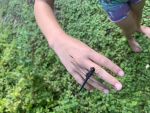
10 October 2022: Image of the day: This male slaty skimmer made a new friend in Arden (a daughter of the refuge manager) one day this July as he continually landed on her just outside of HQ. Slaty skimmer dragonflies have been described as curious, or even friendly.
#UnexpectedWildlifeRefuge #slatyskimmer #dragonfly #njinsects #njnature #njwildlife
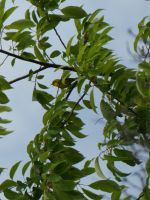
7 October 2022: Fun Fact Friday: This male prairie warbler was photographed mid-song on the south end of the Refuge. Like most male warblers, male prairie warblers have two songs. They sing a faster song to attract a female and a slower, territorial song to deter other males. PC: Bill Cahill
#FunFactFriday #UnexpectedWildlifeRefuge #prairiewarbler #warbler #njbirds #njnature #njwildlife
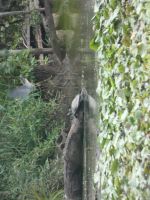
3 October 2022: Image of the day: These red-bellied turtles were photographed basking on a log in the main pond, just as a green heron took off behind them.
#UnexpectedWildlifeRefuge #redbelliedturtle #greenheron #njreptiles #njbirds #njnature #njwildlife
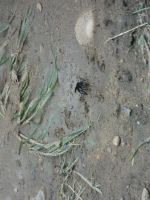
23 September 2022: Fun Fact Friday: Organ pipe mud dauber wasps are named for the cylindrical nests they make. Females pick up mud with their mandibles, form it into a ball, and grasp the ball with their front legs. They then fly back to the nest, and use their foreheads to spread the mud balls out into long pipes. Chambers are carved inside the pipes, and a single egg is deposited inside each chamber. This individual was photographed rolling a ball of mud near the main pond.
#FunFactFriday #UnexpectedWildlifeRefuge #organpipemuddauber #muddauberwasp #wasp #njinsects #njnature #njwildlife
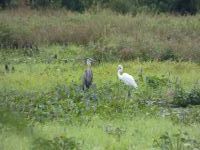
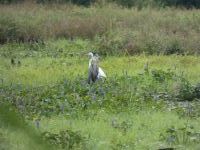
19 September 2022: This great blue heron and great egret were photographed together in the main pond last month. It is not uncommon for these species to wade and/or roost in close proximity, and in our ponds they can be seen together quite often. Great blue herons are generally about 4' tall and weigh 5 lbs. Great egrets are closer to 3' tall and typically weigh about 2.5 lbs. Great egrets are also more closely related to great blue herons than to their smaller cousins, the snowy egrets.
#UnexpectedWildlifeRefuge #greatblueheron #greategret #njbirds #njnature #njwildlife
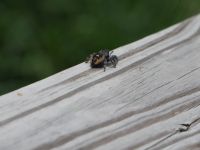
12 September 2022: This bold jumping spider or bold jumper was photographed on the porch at HQ last month. Bold jumpers are fuzzy, walk with jerky movements, and do not build webs. They can jump astonishingly long distances-up to as far as 50 times their body length. They belong to the genus Phidippus, a group of jumping spiders easily identified both by their relatively large size and their metallic blue or green chelicerae (one of two sets of mouthpart appendages).
#UnexpectedWildlifeRefuge #jumpingspider #boldjumper #spider #njarthropods #njnature #njwildlife
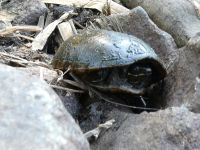
5 September 2022: This common musk turtle was photographed near Miller Pond in July. Common musk turtles prefer shallow bodies of water with abundant vegetation and soft, organic bottoms. Although this individual was out during the day, musk turtles are primarily nocturnal, often seen foraging in shallow water in the evening. PC: Bill Cahill
#UnexpectedWildlifeRefuge #commonmuskturtle #turtle #njreptiles #njnature #njwildlife
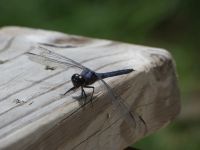
29 August 2022: The slaty skimmer is a dragonfly of the skimmer family, native to the eastern US. Adults fly from June to August and are just over 2" long. Mature males are dark blue with black heads, while females and juveniles have brown abdomens with a darker stripe down their backs. This male (with wings partially damaged, likely from a predator) was photographed near HQ last month.
#UnexpectedWildlifeRefuge #slatyskimmer #dragonfly #njinsects #njnature #njwildlife
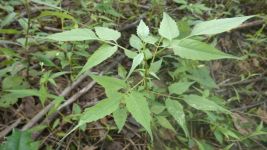
25 August 2022: Throwback to this photo of a devil's beggarticks plant taken on the boundary trail in 2019. Devil's beggarticks is an annual herb in the aster family found throughout the US that can grow from 1-3 feet tall. Yellow-orange flowers bloom from July to October, and the seeds easily catch onto fabric and fur to aid in disbursement.
#tbt #ThrowbackThursday #UWRHistory #UnexpectedWildlifeRefuge #devilsbeggarticks #wildflower #njplants #njnature
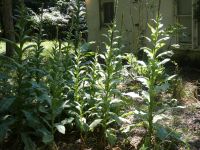
22 August 2022: Common mullein is a biennial plant with large, hairy leaves. The first year it forms a low-growing rosette of leaves and in the second year produces a 3-5' tall flowering stem, with yellow flowers crowded on a spike (as seen here in front of the Miller House).
#UnexpectedWildlifeRefuge #commonmullein #wildflower #njplants #njnature
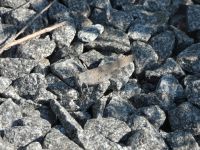
15 August 2022: The Carolina grasshopper, or Carolina locust is a type of short-horned grasshopper characterized by short, heavy antennae. They have excellent camouflage when resting on the ground, but are more showy in flight. They have erratic flight paths, and may look like heavy, strange butterflies when flying. This individual was well camouflaged among the rocks at Miller Pond earlier this month.
#UnexpectedWildlifeRefuge #carolinagrasshopper #locust #njinsects #njnature #njwildlife
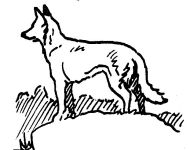
11 August 2022: Throwback to this gray wolf drawn many years ago by Refuge cofounder Hope Sawyer Buyukmihci. The largest member of the dog family, they are native to North America, though no wolves remain in the wild in NJ due to hunting and trapping. To raise awareness about these wild dogs, International Wolf Day is celebrated every August 13 (this Saturday).
#tbt #ThrowbackThursday #UWRHistory #UnexpectedWildlifeRefuge #graywolf #wolf #internationalwolfday #njnature #njwildlife
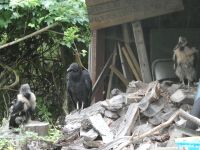
8 August 2022: Our resident black vultures have done it again! The two young vultures (pictured here on a woodpile with a parent) have recently fledged from the nesting area in the cabin barn attic. Stay tuned for a more in-depth story on our resident vultures in the newsletter later this month.
#UnexpectedWildlifeRefuge #blackvulture #fledgling #njbirds #njnature #njwildlife
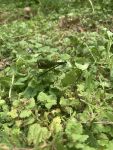
1 August 2022: This female ebony jewelwing damselfly was photographed near HQ this spring. Female ebony jewelwings have a bronze body and smoky-brown wings, with a distinct white spot (pterostigma) at the outer edge of the forewing. Males have an iridescent, blue-green body with solid black wings.
#UnexpectedWildlifeRefuge #ebonyjewelwing #damselfly #njinsects #njnature #njwildlife
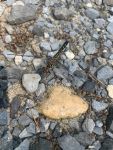
25 July 2022: Image of the day: This female blue dasher dragonfly, photographed in the driveway at Headquarters, looks different from her male counterpart. Though they are similar in size, and both have a yellow-striped thorax, the female's body (like her thorax) is also yellow-striped, while the male's body is powder blue.
#UnexpectedWildlifeRefuge #bluedasher #dragonfly #njinsects #njnature #njwildlife
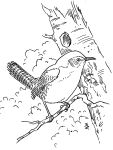
21 July 2022: Throwback to this house wren drawn many years ago by Edmund J Sawyer, father of Refuge cofounder Hope Sawyer Buyukmihci. The most common wren in the US, house wrens are cavity-nesting birds, preferring brushy habitat over open areas. They are both loud and persistent singers, using song, in part, to defend their breeding territories.
#tbt #ThrowbackThursday #UWRHistory #UnexpectedWildlifeRefuge #housewren #wren #njbirds #njnature #njwildlife
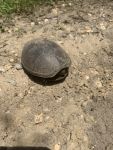
18 July 2022: Image of the day: We have been enjoying the sights of nesting season for the turtles of the Refuge over the past few months. Pictured here is an eastern mud turtle, on her way back to the main pond after laying her eggs.
#UnexpectedWildlifeRefuge #easternmudturtle #turtle #njreptiles #njnature #njwildlife
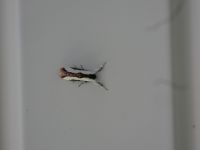
11 July 2022: Image of the day: Beautiful wood nymph moths have specific colors and patterns which serve as camouflage. When found resting on a leaf, one might be easily overlooked by predators as bird droppings. Even their furry legs stretch out in such a way as to help them look like a splat of feces.
#UnexpectedWildlifeRefuge #beautifulwoodnymph #moth #njinsects #njnature #njwildlife

5 July 2022: Shop on Amazon? You can now support Unexpected Wildlife Refuge through the AmazonSmile program! Just go to https://smile.amazon.com/ and choose Unexpected Wildlife Refuge as your charity. Every time you shop, be sure to choose the AmazonSmile page and UWR will receive a donation! Feel great knowing you are helping all wildlife at the Refuge!
#UnexpectedWildlifeRefuge #AmazonSmile #charity #nonprofit #donate
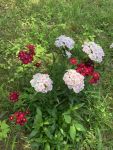
5 July 2022: Image of the day: This "volunteer" sweet William plant popped up in front of the wooden trail sign near the main pond this spring. The flowers of sweet William grow in rounded, dense clusters, and are often white, red and/or purple. A volunteer plant grows on its own, rather than being deliberately planted, often growing from seeds that float in on the wind, or are dropped by birds.
#UnexpectedWildlifeRefuge #volunteerplant #sweetwilliam #njflowers #njnature
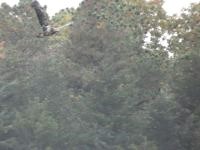
27 June 2022: This juvenile bald eagle was photographed flying over the main pond. A juvenile's wings are considerably wider and blunter than those of an adult, and the young birds also have longer tails than adults.
#UnexpectedWildlifeRefuge #baldeagle #eagle #raptor #njbirds #njnature #njwildlife
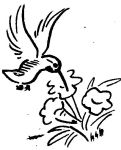
23 June 2022: Throwback to this hummingbird drawn by Refuge cofounder Hope Sawyer Buyukmihci many years ago. Hummingbirds play an important role in pollination, carrying pollen as they fly from plant to plant drinking nectar.
#tbt #ThrowbackThursday #UWRHistory #UnexpectedWildlifeRefuge #hummingbird #njbirds #njnature #njwildlife #njpollinators #nationalpollinatorweek
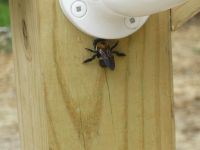
20 June 2022: Image of the day: Carpenter bees (often mistaken for bumblebees) are excellent pollinators of many flowering plants. They gather pollen through “buzz pollination," using their powerful thoracic muscles to sonicate pollen grains out of a flower's anthers.
#UnexpectedWildlifeRefuge #carpenterbee #bee #njinsects #njnature #njwildlife #njpollinators #nationalpollinatorweek
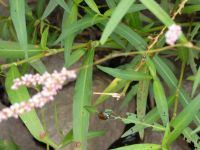
13 June 2022: Japanese beetles have an iridescent-green head and thorax, and copper-colored forewings, or elytra. Those forewings cover strong flight wings, which tend to make a loud buzzing noise in flight. This individual was photographed near Miller Pond.
#UnexpectedWildlifeRefuge #japanesebeetle #beetle #njinsects #njnature #njwildlife
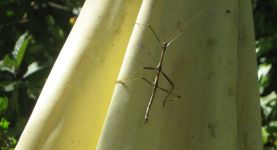
9 June 2022: Throwback to 2019 and this walking stick insect photographed near the main pond. Stick insects are so named for their camouflage--typically brown, black or green, with thin, stick-shaped bodies. They can easily blend in when perched on twigs and branches. PC: Dave Sauder
#tbt #ThrowbackThursday #UWRHistory #UnexpectedWildlifeRefuge #walkingstick #stickbug #njinsects #njnature #njwildlife
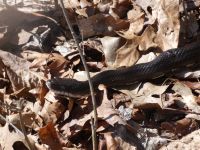
6 June 2022: Image of the day: Black rat snakes are a common species of snake on the Refuge. This individual was photographed near HQ. Shy and secretive, they typically avoid contact with humans. They kill their prey--mainly mice, rats, moles and chipmunks--by constriction.
#UnexpectedWildlifeRefuge #blackratsnake #snake #njreptiles #njnature #njwildlife
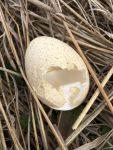
30 May 2022: Image of the day: This wild turkey egg was spotted on a recent bird watching walk around the Refuge last month. For wild turkeys, breeding usually begins in March, and hens will lay 10-12 eggs during a two week period. Continuous incubation begins when the last egg is laid, and eggs will be incubated for 26-28 days. PC: Bill Cahill
#UnexpectedWildlifeRefuge #wildturkey #egg #njbirds #njnature #njwildlife
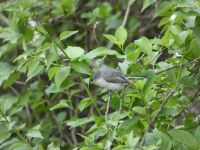
23 May 2022: Image of the day: Blue-gray gnatcatchers are commonly seen around the Refuge; this individual was photographed along the HQ driveway. Blue-gray gnatcatchers are known for their soft, insistent calls and constant motion. As they hop through vegetation, they conspicuously flick their white-edged tail from side to side, scaring up insects and chasing after them.
#UnexpectedWildlifeRefuge #bluegraygnatcatcher #gnatcatcher #njbirds #njnature #njwildlife
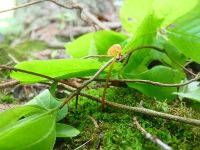
19 May 2022: Throwback to 2017 and this picture of a Conocybe mushroom. Conocybe is a genus of mushrooms containing at least 244 species. Most have a long, thin, fragile stipe and are sometimes called dunce caps or cone heads due to their conical caps.
#tbt #ThrowbackThursday #UWRHistory #UnexpectedWildlifeRefuge #conocybemushroom #mushroom #fungi #njfungi #njnature
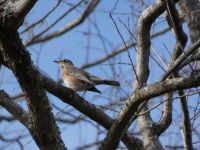
16 May 2022: Image of the day: This American robin was photographed near HQ in March. American robins are adaptable birds, and not all migrate south for the winter. Some remain somewhat local, roosting together in large flocks.
#UnexpectedWildlifeRefuge #americanrobin #robin #njbirds #njnature #njwildlife
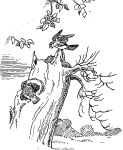
5 May 2022: Throwback to these eastern bluebirds drawn by Hope Sawyer Buyukmihci many years ago. Eastern bluebirds build their nests in natural cavities, or nest boxes/artificial refuges. Nest sites can be limited, so bluebirds may battle to secure one.
#tbt #ThrowbackThursday #UWRHistory #UnexpectedWildlifeRefuge #easternbluebird #bluebird #njbirds #njnature #njwildlife
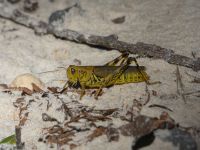
2 May 2022: Image of the day: Differential grasshoppers belong to the family Acrididae (short-horned grasshoppers) in the order Orthoptera (grasshoppers, katydids, crickets). These grasshoppers are relatively large. Their color can vary somewhat and may be green, brownish green, or olive green, with a black herringbone pattern on the femurs of their hind legs.
#UnexpectedWildlifeRefuge #grasshopper #differentialgrasshopper #njinsects #njnature #njwildlife
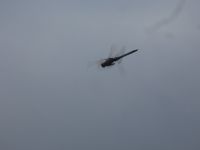
25 April 2022: This slaty skimmer dragonfly was photographed at Miller Pond last summer. Slaty skimmers are large dragonflies commonly seen around ponds or slow-moving streams with muddy bottoms, often near woodlands. In NJ, dragonfly and damselfly season runs from Apr-Oct, although the best time for spotting the most species is from Jun-Jul.
#UnexpectedWildlifeRefuge #dragonfly #slatyskimmer #njinsects #njnature #njwildlife
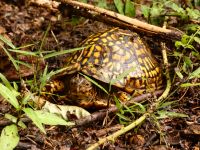
21 April 2022: Throwback to 2018 and this eastern box turtle photographed among the debris of the forest floor. Eastern box turtles live in moist woodlands, and have many variations in their colors and marking patterns.
#tbt #ThrowbackThursday #UWRHistory #UnexpectedWildlifeRefuge #boxturtle #turtle #njreptiles #njnature #njwildlife
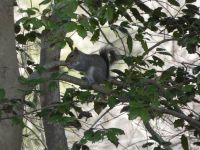
18 April 2022: Image of the day: The eastern gray squirrel is one of more than 200 species of squirrels around the world. They play an important role in seed dispersal, and they have an excellent sense of smell which they use to help locate food that they’ve hidden away.
#UnexpectedWildlifeRefuge #graysquirrel #squirrel #njmammals #njnature #njwildlife
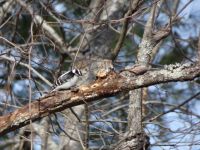
11 April 2022: This downy woodpecker was photographed drilling into a tree near Headquarters last month. Woodpeckers peck wood to forage, store food, excavate their nests, and to mark their territory and attract a mate with the resulting noise. Downys are the smallest and most commonly seen North American woodpecker. They are often confused with the hairy woodpecker, though hairys are larger, with a bigger bill.
#UnexpectedWildlifeRefuge #downywoodpecker #woodpecker #njbirds #njnature #njwildlife
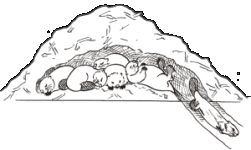
7 April 2022: In honor of International Beaver Day, we are featuring a throwback to this family of beavers in their lodge drawn by Hope Sawyer Buyukmihci many years ago. Beavers use their lodge to sleep, eat, groom each other, nurse kits, etc. Females give birth to one litter of kits per year, usually between April and July.
#tbt #ThrowbackThursday #UWRHistory #UnexpectedWildlifeRefuge #BeaverDay #beaver #lodge #njmammals #njnature #njwildlife
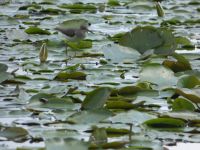
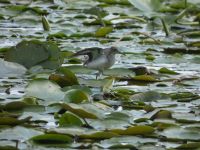
4 April 2022: Solitary sandpipers forage in small freshwater wetlands, often in wooded environments, where they walk slowly through shallow water. As their name suggests, solitary sandpipers are not gregarious, and are usually seen alone during migration. This individual was photographed on the main pond in August of 2020.
#UnexpectedWildlifeRefuge #solitarysandpiper #sandpiper #njbirds #njnature #njwildlife
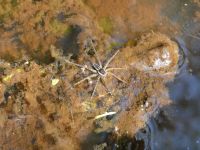
28 March 2022: Image of the day: This six-spotted fishing spider, a semi-aquatic species of fishing spider, was photographed on the water surface of the main pond. Although we can see more than six spots on the abdomen, these spiders are named for the six dark spots hidden on the underside of their cephalothorax.
#UnexpectedWildlifeRefuge #sixspottedfishingspider #fishingspider #njspiders #njnature #njwildlife
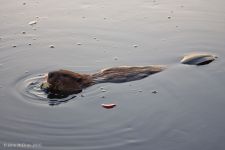
24 March 2022: Throwback to 2010 and this beaver enjoying an apple in the main pond photographed by John McElroy. *According to policy, we no longer allow supplemental feeding of wildlife on the Refuge.
#tbt #ThrowbackThursday #UWRHistory #UnexpectedWildlifeRefuge #beaver #njmammals #njnature #njwildlife
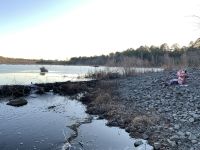
21 March 2022: On a wintry day this January, our manager and her daughter did some birdwatching around Miller Pond. Watching birds is a great way to study nature at home and in the wild for all ages. With a pair of children's binoculars, a nature journal, and some colored pencils, you can help a child in your life discover the wonderful world of birds.
#UnexpectedWildlifeRefuge #birdwatching #birding #naturekids #njnature #njwildlife
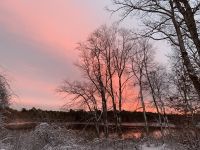
14 March 2022: Image of the day: This view of a lovely sunset over the main pond was photographed in early January after one of the first snowstorms of the season.
#UnexpectedWildlifeRefuge #pond #snow #sunset #njnature
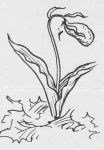
10 March 2022: Throwback to this lady slipper flower drawn by Hope Sawyer Buyukmihci many years ago. These wildflowers belong to the orchid family, and they can grow up to 15 inches tall. If you come out for a visit between May and July, you may find some flowering along the inner trails.
#tbt #ThrowbackThursday #UWRHistory #UnexpectedWildlifeRefuge #ladyslipper #flower #njflowers #njnature #njwildlife
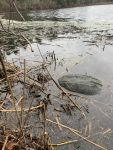
7 March 2022: Image of the day: We saw this large snapping turtle as we patrolled along the main pond on a sunny day in January. Snapping turtles are aquatic turtles who prefer slow-moving, shallow bodies of water with muddy bottoms.
#UnexpectedWildlifeRefuge #snappingturtle #turtle #njreptiles #njnature #njwildlife
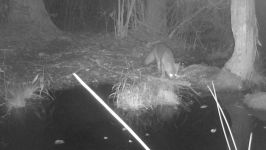
28 February 2022: Image of the day: While sorting through some of our many trail camera photos from the past two years, we came across a photo of this gray fox. Gray foxes are the most cat-like of all the canids (members of the family Canidae), and they are one of only two species of canids who can climb trees (along with raccoon dogs in Europe and Asia.)
#UnexpectedWildlifeRefuge #grayfox #fox #canid #njnature #njwildlife
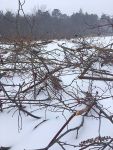
24 February 2022: Throwback to the winter of 2018 and this photo of a snowy beaver food raft. Beavers stockpile food in a raft or cache, which is built as close to the entrance of their lodge as possible. When building the raft, they carry branches to the pond and haul them through the water. They then dive down and push the butt end of the branches into the mud at the bottom of the pond and proceed to weave in additional layers of branches.
#tbt #ThrowbackThursday #UWRHistory #UnexpectedWildlifeRefuge #beaver #foodraft #njnature #njwildlife
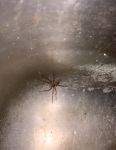
21 February 2022: Image of the day: This fishing spider was photographed in the kitchen sink of the Miller House. Fishing spiders are among the largest-bodied spiders in the northeast US. Their name suggests a preference for an aquatic habitat, though while some species do dwell near bodies of water, others seem to prefer indoor habitats.
#UnexpectedWildlifeRefuge #fishingspider #spider #njnature #njwildlife
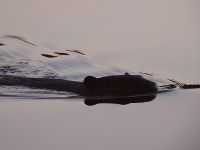
10 February 2022: For this week's throwback we're featuring a photograph from 2017 of a beaver swimming unhurriedly through our main pond at sunset.
#tbt #ThrowbackThursday #UWRHistory #UnexpectedWildlifeRefuge #beaver #njnature #njwildlife
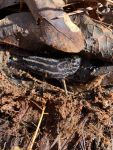
7 February 2022: Image of the day: While patrolling along our Bluebird Trail last fall, our manager spotted this leopard slug among some debris. Although we cannot see the full body--only about 2/3 of the slug is visible from the tail up to the mantle--adult leopard slugs measure 4-8" in length.
#UnexpectedWildlifeRefuge #leopardslug #slug #gastropod #njnature #njwildlife
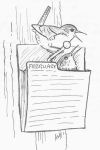
3 February 2022: Throwback to many years ago and this sketch of a couple wrens by Hope Sawyer Buyukmihci. New Jersey has five species of wrens, including: house, marsh, Carolina, winter, and sedge wrens.
#tbt #ThrowbackThursday #UWRHistory #UnexpectedWildlifeRefuge #wren #njbirds #njnature #njwildlife
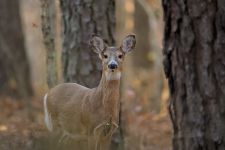
31 January 2022: Image of the day: This white-tailed deer doe was seen off of Buck Road along the entry into the Refuge. Deer are social animals, with females traveling together in herds. Each social group is led by a matriarchal female, and bucks and does live apart with the exception of the start of their breeding season. PC: J Amsterdam
#UnexpectedWildlifeRefuge #whitetaileddeer #doe #njnature #njwildlife
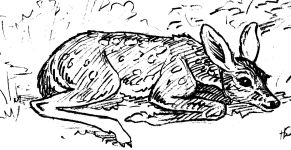
27 January 2022: Our throwback image this week is of a fawn sketched some years ago by Hope Sawyer Buyukmihci, Refuge cofounder. In NJ, white-tailed deer generally breed from late September through January, with the peak of breeding (rutting) activity occurring in mid-November. Fawns are born beginning in early May.
#tbt #ThrowbackThursday #UWRHistory #UnexpectedWildlifeRefuge #whitetaileddeer #fawn #njnature #njwildlife
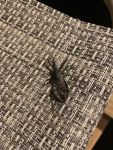
24 January 2022: Image of the day: This adult wheel bug was photographed on the porch of Headquarters last summer. Wheel bugs are named for the prominent spiny ridge or "wheel" on the thorax. They are one of the largest terrestrial true bugs in North America, reaching up to 1.5".
#UnexpectedWildlifeRefuge #wheelbug #njnature #njwildlife
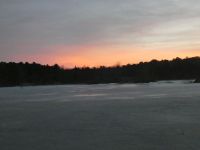
20 January 2022: Throwback to a winter day in early 2018 and this view of the sunset over a frozen main pond.
#tbt #ThrowbackThursday #UWRHistory #UnexpectedWildlifeRefuge #pond #winter #njnature
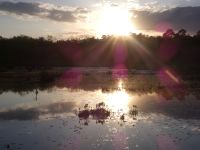
17 January 2022: Image of the day: The main pond provides ample opportunity for photo-ops, as with this sunset over the water one day last spring. The lens flare is caused by the bright sunlight shining directly into the lens and scattering.
#UnexpectedWildlifeRefuge #pond #sunset #lensflare #njnature
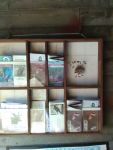
13 January 2022: Throwback to 2018 and this photo of an active paper wasp nest inside a display case in the barn. This social wasp is commonly referred to as the yellow paper wasp due to the yellow bands found on their thorax and abdomen. PC: Dave Sauder
#tbt #ThrowbackThursday #UWRHistory #UnexpectedWildlifeRefuge #wasp #waspnest #njwildlife #njnature
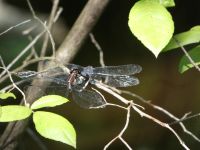
10 January 2022: Image of the day: These great blue skimmer dragonflies were seen mating along the perimeter of the main pond this past summer. All dragonflies and damselflies have a 10-segmented abdomen, with male secondary genitalia located in segments two and three, and female genitalia in segment eight. In the mating position, referred to as "wheel," the male is on top, using claspers on his abdomen to hold onto the female at the back of her head.
#UnexpectedWildlifeRefuge #greatblueskimmer #dragonfly #njnature #njwildlife
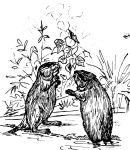
6 January 2022: Throwback to this drawing of two beavers foraging, by Hope Sawyer Buyukmihci from many years ago. Hope was a talented artist, and had a particular affinity for creating illustrations of the Refuge beavers.
#tbt #ThrowbackThursday #UWRHistory #UnexpectedWildlifeRefuge #beaver #njnature #njwildlife
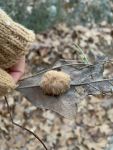
3 January 2022: Image of the day: The fuzzy growth on this oak leaf is a wool sower gall--a plant growth induced by the secretions of gall wasp larvae. Galls can be as large as 3/4" and are often bright pink or yellow, fading to brown in the fall. They are incredibly diverse in structure, and provide food and protection to the larvae as they grow and develop.
#UnexpectedWildlifeRefuge #woolsowergall #gallwasp #wasp #njnature #njwildlife
RSS services:
Blogging Fusion Blog Directory
Feed Shark
R-bloggers.com
RSS-Dir.com
RSS Feed Directory - Search and read RSS Feeds without any RSS reader